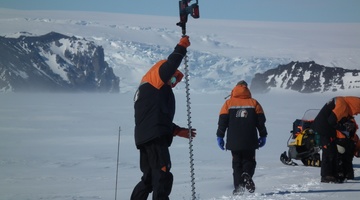Dr Wolfgang Rack and Dr Adrian McDonald discuss a few of the career pathways that involve the use of satellites and remote sensing.
Point of interest
- Satellites are used for land, ocean, crop and vegetation mapping and to learn more about air quality. What purposes do these different observations serve?
Transcript
Dr Wolfgang Rack
In my opinion, a career in satellite remote sensing – it is a very broad field – and this is also the advantage of the career in that sense. Satellite remote sensing can be applied to many fields in Earth science, and the great thing is that the application could be the polar areas but it could also be land vegetation or land surface mapping in general or ocean mapping. So in general, remote sensing is a very multidisciplinary field, which opens a wide field, a wide field of career pathways and options.
Dr Adrian McDonald
There’s a number of organisations in New Zealand that are interested in using satellite data. So there’s organisations like National Institute for Water and Atmosphere, there’s also the MetService because weather forecasters use satellite data a lot. Obviously, there’s lots of people working in universities as well on atmospherics physics and satellite data in particular. There’s also lots of work for people using satellites to examine the Earth’s surface and try and understand crops and things like that. There’s also people working in councils where satellites are often used for air-quality measurements, and air quality’s a really important thing.
Atmospheric science and climate science is a really useful thing to do. Because there’s large unknowns and it’s going to have a big impact on mankind, because of man-made climate change.
Acknowledgements
Daniel Price, University of Canterbury
Dr Phil Sutton, NWA
NIWA
NASA
Prof. Simon Kingham, Geography, University of Canterbury


